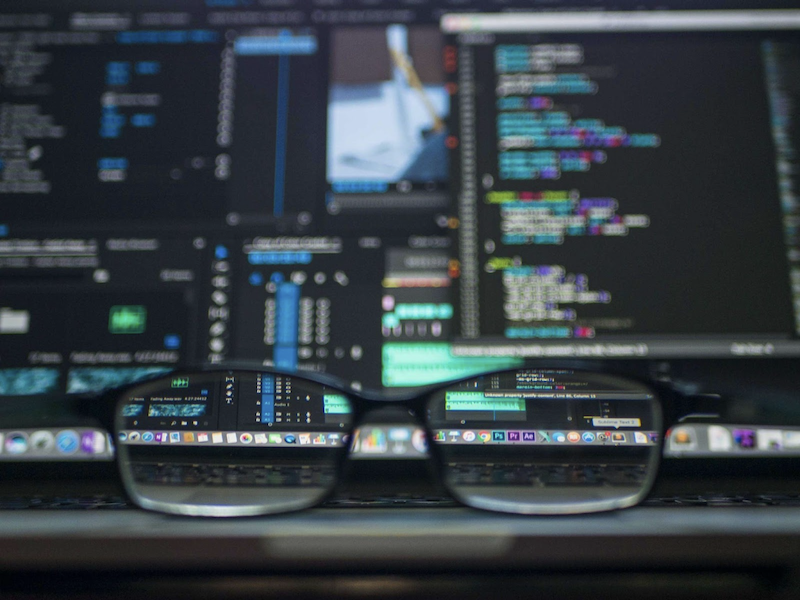Software Composition Analysis vs. Digital Forensics: What Is the Difference?
February 9, 2023
Branded Content by Cosmic Press
Software composition analysis (SCA) and digital forensics are two ways of understanding what software artifacts make up a software system or application, and identifying their security impact.
They are both techniques that can help prevent cyber attacks and conduct investigations after an attack has taken place. However, they work very differently – SCA is a single software solution that automatically analyzes software applications and their components, while digital forensics consists of a range of tools that provide insight about software systems. Let’s discuss these differences in more detail.
What Is Software Composition Analysis?
Software composition analysis is a process of identifying and evaluating the third-party components, libraries, and frameworks that are used in software applications. These components, also known as dependencies, are typically imported into an application to provide additional functionality or to make development easier.
SCA helps developers understand the origin, licensing, and security of the dependencies they use in their applications. It can also identify known vulnerabilities and provide recommendations for remediation. SCA is important because it helps developers ensure that their applications are built on a foundation of secure and high-quality dependencies.
SCA tools typically analyze the source code of an application and its dependencies to identify the components being used. They may also provide information about the versions of these components, as well as any known vulnerabilities or other issues. Some SCA tools also offer features such as automated updates for dependencies, helping developers keep their applications up to date with the latest versions.
Overall, SCA helps developers build more secure and reliable software by providing visibility into the dependencies they use and alerting them to any potential issues.
How Does Software Composition Analysis Work?
SCA typically works by analyzing the source code of an application and its dependencies to identify the third-party components being used. SCA tools typically use static analysis techniques, which involve analyzing the code without executing it, to identify the dependencies and gather information about them.
Here is a general outline of how SCA works:
1. The SCA tool scans the source code of an application and its dependencies to identify the third-party components being used.
2. The tool compares the identified components against a database of known components and their associated metadata, such as version information and licensing information.
3. The tool produces a report that lists the identified components and provides information about their origin, licensing, and any known vulnerabilities or other issues.
4. The report may also include recommendations for remediation, such as updating to a newer version of a component or replacing it with an alternative.
SCA tools may also offer features such as automated updates for dependencies, helping developers keep their applications up to date with the latest versions. Some SCA tools may also provide real-time alerts when new vulnerabilities are discovered in the dependencies being used.
Software Composition Analysis Pros and Cons
Pros of software composition analysis:
- SCA helps organizations to identify and address known vulnerabilities in their software, which can improve the security of the application.
- It can help organizations to ensure compliance with licensing requirements, which can prevent legal issues and costly fines.
- SCA can help organizations to reduce the risk of security breaches or other cyber threats by identifying and addressing potential vulnerabilities.
- Automated SCA tools can save time and resources compared to manual analysis.
Cons of software composition analysis:
- SCA can be resource-intensive, particularly if done manually or if there are a large number of third-party libraries and components in the software.
- SCA tools may not be able to identify all vulnerabilities or licensing issues, particularly if they are unknown or newly introduced.
- The results of SCA may not be accurate if the tool is not properly configured or if the metadata for the libraries and components is incomplete or incorrect.
- SCA may not be feasible for organizations that do not have the resources or expertise to implement and maintain the process.
What is Digital Forensics?
Digital forensics is the practice of collecting, analyzing, and presenting digital evidence in a manner that is legally admissible. It involves using scientific and technical methods to identify, preserve, recover, analyze, and present the digital evidence found on computers, networks, and other digital devices in a way that is useful for legal purposes.
Digital forensics is used in a variety of contexts, including criminal investigations, civil litigation, and corporate security. It is a critical tool for law enforcement, government agencies, and private companies in their efforts to identify and prosecute cybercrimes, such as cyberbullying, identity theft, and fraud.
The goal of digital forensics is to provide a clear and accurate picture of what happened on a digital device or network. To do this, forensic analysts use a variety of tools and techniques, including data recovery, disk imaging, and network analysis, to extract and analyze digital evidence. They must also follow strict protocols to ensure that the evidence they collect is admissible in court.
Overall, digital forensics is a crucial tool for understanding and investigating digital events and providing evidence that can be used in legal proceedings.
How Does Digital Forensics Work?
Digital forensics is a systematic and scientific process that involves collecting and analyzing digital evidence in a way that is legally admissible. It is a critical tool for understanding and investigating digital events and providing evidence that can be used in legal proceedings.
Here is a general outline of how digital forensics works:
1. The forensic analyst starts by identifying the digital devices and data sources that may contain relevant evidence. This may include computers, servers, mobile devices, and storage media such as hard drives and USB drives.
2. The analyst creates a forensic image of each digital device, which is a bit-by-bit copy of the device’s entire storage capacity. This process is designed to preserve the original data in a way that is admissible in court.
3. The analyst analyzes the forensic images using specialized software and tools to extract and analyze the digital evidence. This may involve recovering deleted files, analyzing network activity logs, or reconstructing user activity.
4. The analyst documents their findings in a report that includes a detailed description of the evidence and their analysis. The report should be clear and concise, and it should include any relevant context or background information.
5. The report is presented to the relevant parties, such as law enforcement, legal counsel, or a corporate security team. The evidence and analysis may be used in legal proceedings or to support internal investigations.
Digital Forensics Pros and Cons
The following are some advantages of digital forensics:
- Digital evidence can be used to prosecute crimes that may be difficult to prove using traditional methods.
- Digital forensics can help organizations to identify and mitigate cyber threats and prevent future attacks.
- It can help organizations to understand the root cause of a data breach or other cyber incident.
- Digital forensics can be used to recover lost or deleted data, which can be valuable in business or personal contexts.
Cons of digital forensics:
- The process of collecting and analyzing digital evidence can be time-consuming and resource-intensive.
- Digital forensics requires specialized training and expertise, which can be difficult to find and may be costly to hire.
- There is the potential for data to be altered or damaged during the examination process, which can affect the integrity of the evidence.
- There may be legal or regulatory constraints on the use of digital forensics, depending on the jurisdiction and context.
- The results of digital forensics may not be admissible in court if the evidence is not collected and analyzed in a manner that meets the legal standards for admissibility.
Conclusion
In conclusion, SCA and digital forensics are two distinct practices that are used to analyze and understand different aspects of software and digital devices. SCA is a process of identifying and evaluating the third-party components, libraries, and frameworks that are used in software applications. It helps developers understand the origin, licensing, and security of the dependencies they use in their applications and helps them build more secure and reliable software.
Digital forensics, on the other hand, is the practice of collecting, analyzing, and presenting digital evidence in a manner that is legally admissible. It is used in criminal investigations, civil litigation, and corporate security to identify and prosecute cybercrimes and understand digital events. Both SCA and digital forensics can be valuable tools, but it is important to understand the differences between them and how they can be used effectively.
Branded content furnished by our promotional partners. The Daily Sundial editorial staff is not involved in its production. Content does not reflect the views or opinions of the editorial staff.










